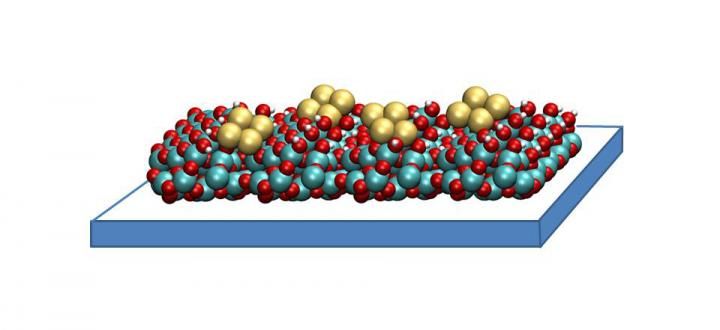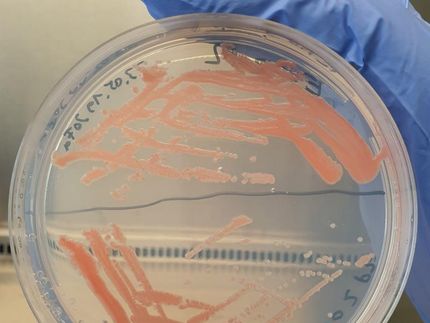Copper clusters capture and convert carbon dioxide to make fuel
Advertisement
Capture and convert - this is the motto of carbon dioxide reduction, a process that stops the greenhouse gas before it escapes from chimneys and power plants into the atmosphere and instead turns it into a useful product.

A copper tetramer catalyst created by researchers at Argonne National Laboratory may help capture and convert carbon dioxide in a way that ultimately saves energy. It consists of small clusters of four copper atoms each, supported on a thin film of aluminum oxide. These catalysts work by binding to carbon dioxide molecules, orienting them in a way that is ideal for chemical reactions. The structure of the copper tetramer is such that most of its binding sites are open, which means it can attach more strongly to carbon dioxide and can better accelerate the conversion.
Larry Curtiss, Argonne National Laboratory
One possible end product is methanol, a liquid fuel and the focus of a recent study conducted at the U.S. Department of Energy's (DOE) Argonne National Laboratory. The chemical reactions that make methanol from carbon dioxide rely on a catalyst to speed up the conversion, and Argonne scientists identified a new material that could fill this role. With its unique structure, this catalyst can capture and convert carbon dioxide in a way that ultimately saves energy. They call it a copper tetramer.
It consists of small clusters of four copper atoms each, supported on a thin film of aluminum oxide. These catalysts work by binding to carbon dioxide molecules, orienting them in a way that is ideal for chemical reactions. The structure of the copper tetramer is such that most of its binding sites are open, which means it can attach more strongly to carbon dioxide and can better accelerate the conversion.
The current industrial process to reduce carbon dioxide to methanol uses a catalyst of copper, zinc oxide and aluminum oxide. A number of its binding sites are occupied merely in holding the compound together, which limits how many atoms can catch and hold carbon dioxide.
"With our catalyst, there is no inside," said Stefan Vajda, senior chemist at Argonne and the Institute for Molecular Engineering and co-author on the paper. "All four copper atoms are participating because with only a few of them in the cluster, they are all exposed and able to bind."
To compensate for a catalyst with fewer binding sites, the current method of reduction creates high-pressure conditions to facilitate stronger bonds with carbon dioxide molecules. But compressing gas into a high-pressure mixture takes a lot of energy.
The benefit of enhanced binding is that the new catalyst requires lower pressure and less energy to produce the same amount of methanol.
"We're interested in finding new catalytic reactions that will be more efficient than the current catalysts, especially in terms of saving energy," said Larry Curtiss, an Argonne Distinguished Fellow who co-authored this paper.
Copper tetramers could allow us to capture and convert carbon dioxide on a larger scale--reducing an environmental threat and creating a useful product like methanol that can be transported and burned for fuel. Of course the catalyst still has a long journey ahead from the lab to industry.
Potential obstacles include instability and figuring out how to manufacture mass quantities. There's a chance that copper tetramers may decompose when put to use in an industrial setting, so ensuring long-term durability is a critical step for future research, Curtiss said. And while the scientists needed only nanograms of the material for this study, that number would have to be multiplied dramatically for industrial purposes.
































































